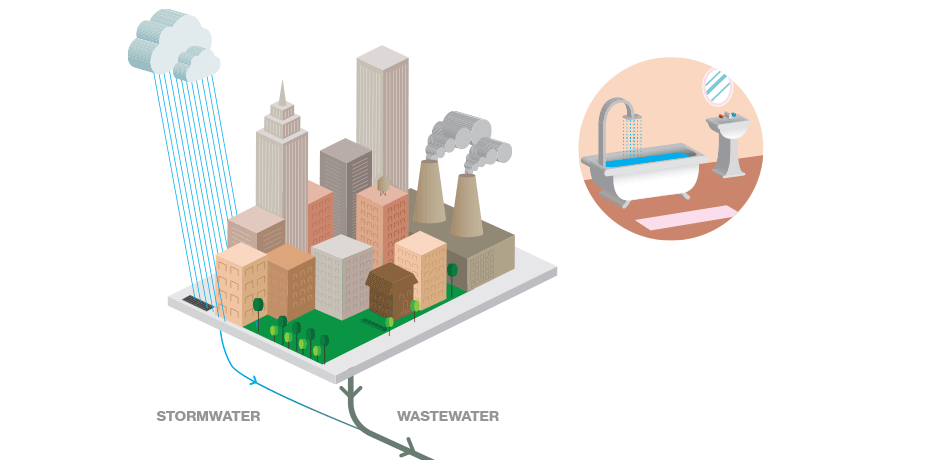Economical Solutions for Large-Scale Waste Water Treatment Facilities
Strategic Approaches to Enhance Waste Water Therapy Effectiveness and Minimize Environmental Impact
In the realm of drainage treatment, the pursuit for improved efficiency and decreased ecological impact is a continuous obstacle that requires tactical solutions. As society grapples with the necessary to handle water resources sustainably, a nuanced approach becomes important. The combination of advanced treatment technologies, energy-efficient procedures, source recovery strategies, improved nutrient elimination methods, and clever monitoring and control systems represents a multifaceted framework for addressing these pushing problems. Nonetheless, what lies at the core of this complex web of approaches is the prospective to change the method we come close to waste water treatment, not just as a procedure of disposal, but as a useful chance for development and environmental stewardship.
Advanced Therapy Technologies
Advanced membrane layer filtration systems have revolutionized innovative wastewater therapy procedures, dramatically improving the elimination of pollutants. This innovation has actually proven to be very efficient in removing a broad range of impurities, including drugs, heavy steels, and organic substances, which are often challenging to remove via typical treatment techniques.
Additionally, membrane layer filtration systems supply countless advantages over conventional therapy approaches. They call for less room, produce higher-quality effluent, and are much more immune to variations in influent water high quality. Additionally, these systems are highly versatile and can be easily incorporated into existing treatment plants or made use of as standalone systems for decentralized applications. As the need for tidy water remains to rise, the adoption of advanced membrane layer purification innovations is essential to make certain reliable and sustainable wastewater therapy methods.
Energy-Efficient Processes
The combination of energy-efficient procedures in wastewater treatment systems is critical for maximizing source application and minimizing operational costs. One crucial approach to enhancing power effectiveness in wastewater treatment is the application of innovative oygenation systems, such as great bubble diffusers or surface area aerators, which can improve oxygen transfer efficiency and minimize energy consumption.
In addition, optimizing procedure control and automation through the usage of advanced sensing units and keeping track of systems can enhance overall energy performance by changing procedures in real-time based on actual demand and conditions. Applying power audits and routinely keeping an eye on energy performance signs are essential practices to identify locations for improvement and track energy-saving initiatives effectively. On the whole, the fostering of energy-efficient procedures in wastewater treatment not just profits the setting however additionally adds to long-term expense financial savings and operational sustainability.
Source Recuperation Approaches
With a concentrate on enhancing resource utilization and sustainability in wastewater treatment systems, the application of resource healing techniques becomes an essential aspect in boosting operational efficiency. Resource healing techniques in wastewater treatment involve the identification and extraction of valuable sources from the waste stream, therefore turning what was once taken into consideration waste right into an important possession. By executing resource additional hints healing methods such as nutrient removal and recuperation, energy generation from raw material, and the manufacturing of recyclable water, wastewater therapy plants can reduce ecological impact while making the most of effectiveness.

Enhanced Nutrient Removal Methods
Applying innovative nutrient removal techniques is essential for maximizing the performance of wastewater treatment systems. Enhanced nutrient elimination plays a crucial function in minimizing the environmental effect of cured effluent released into water bodies. One of the key techniques made use of for improved nutrient elimination is the process of biological nutrient removal (BNR), which includes the removal of nitrogen and phosphorus through organic procedures. This can be accomplished with the usage of specialized bacteria that can transform nitrogen substances right into inert nitrogen gas through denitrification, and collect phosphorus within their cells with a procedure my company called boosted biological phosphorus elimination (EBPR)

In addition to BNR, progressed therapy techniques such as membrane layer bioreactors (MBRs) and constructed wetlands can also be employed to improve nutrient elimination effectiveness. MBRs use membrane layers to achieve top quality effluent criteria by efficiently eliminating nutrients and put on hold solids. Created marshes simulate natural marsh processes to eliminate nutrients with plant uptake, microbial activity, and sedimentation. By integrating these sophisticated nutrient removal strategies into wastewater therapy industries, systems and municipalities can successfully minimize nutrient air pollution and shield the setting.
Smart Monitoring and Control Systems
Making use of sophisticated modern technology, the combination of smart tracking and control systems transforms the operational performance of wastewater therapy facilities. These systems incorporate innovative sensing units and data analytics to constantly keep track of essential parameters such as pH degrees, turbidity, liquified oxygen, and flow rates in real-time. By accumulating and examining this data, operators can obtain useful insights right into the performance of the treatment procedures, allowing aggressive changes to maximize treatment performance.
Smart monitoring and control systems also support remote surveillance abilities, allowing operators to gain access to real-time data and control functions from off-site locations. This remote access improves functional flexibility and responsiveness, making it possible for swift treatments in case of system breakdowns anchor or variations in influent high quality. Furthermore, the anticipating maintenance abilities of these systems help avoid tools failures and lessen downtime, ultimately boosting the overall reliability of wastewater therapy operations (Waste Water Treatment).
Verdict
In conclusion, strategic techniques such as innovative treatment modern technologies, energy-efficient processes, resource recuperation methods, boosted nutrient removal methods, and smart tracking and control systems play an essential duty in enhancing wastewater therapy performance and reducing ecological influence. By implementing these techniques, wastewater treatment plants can improve their overall performance, decrease energy usage, recoup valuable resources, and make sure conformity with ecological regulations. These methods are necessary for reliable and sustainable wastewater management methods.

In conclusion, critical strategies such as innovative treatment technologies, energy-efficient procedures, source healing techniques, enhanced nutrient removal techniques, and clever monitoring and control systems play an important duty in boosting wastewater treatment performance and lessening environmental effect.